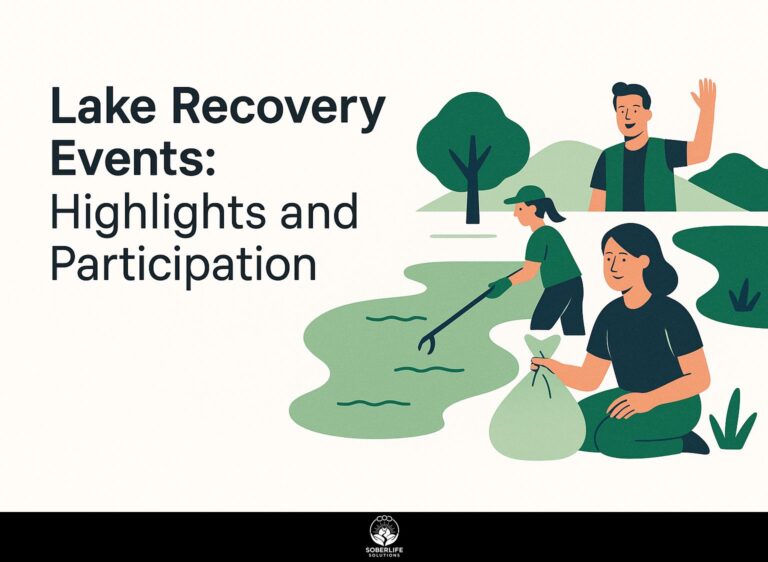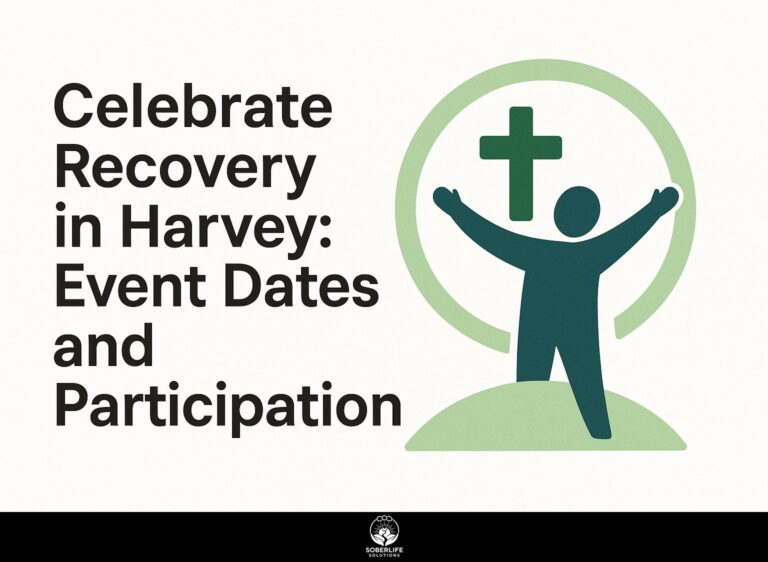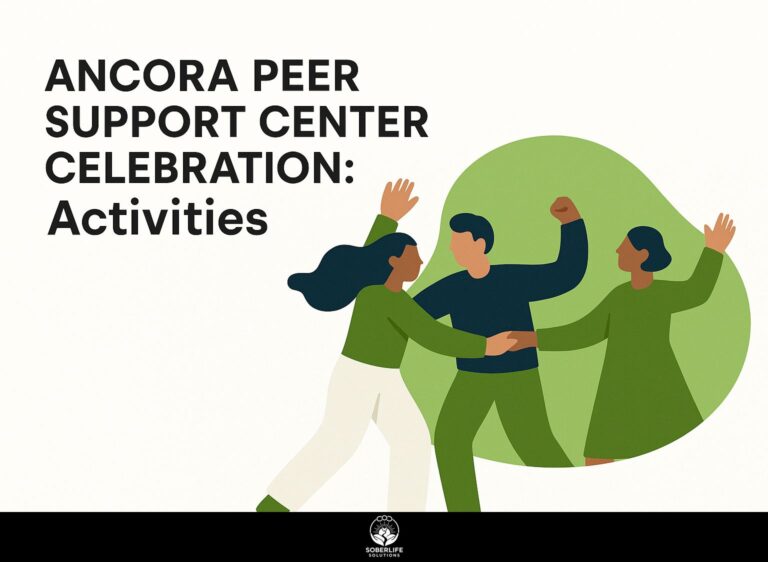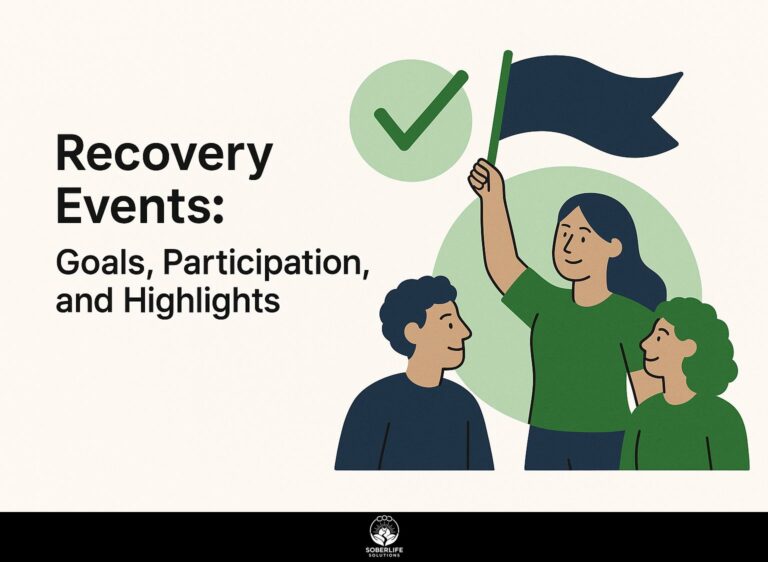Recovery Community Centers: Importance, Funding, and Opportunities
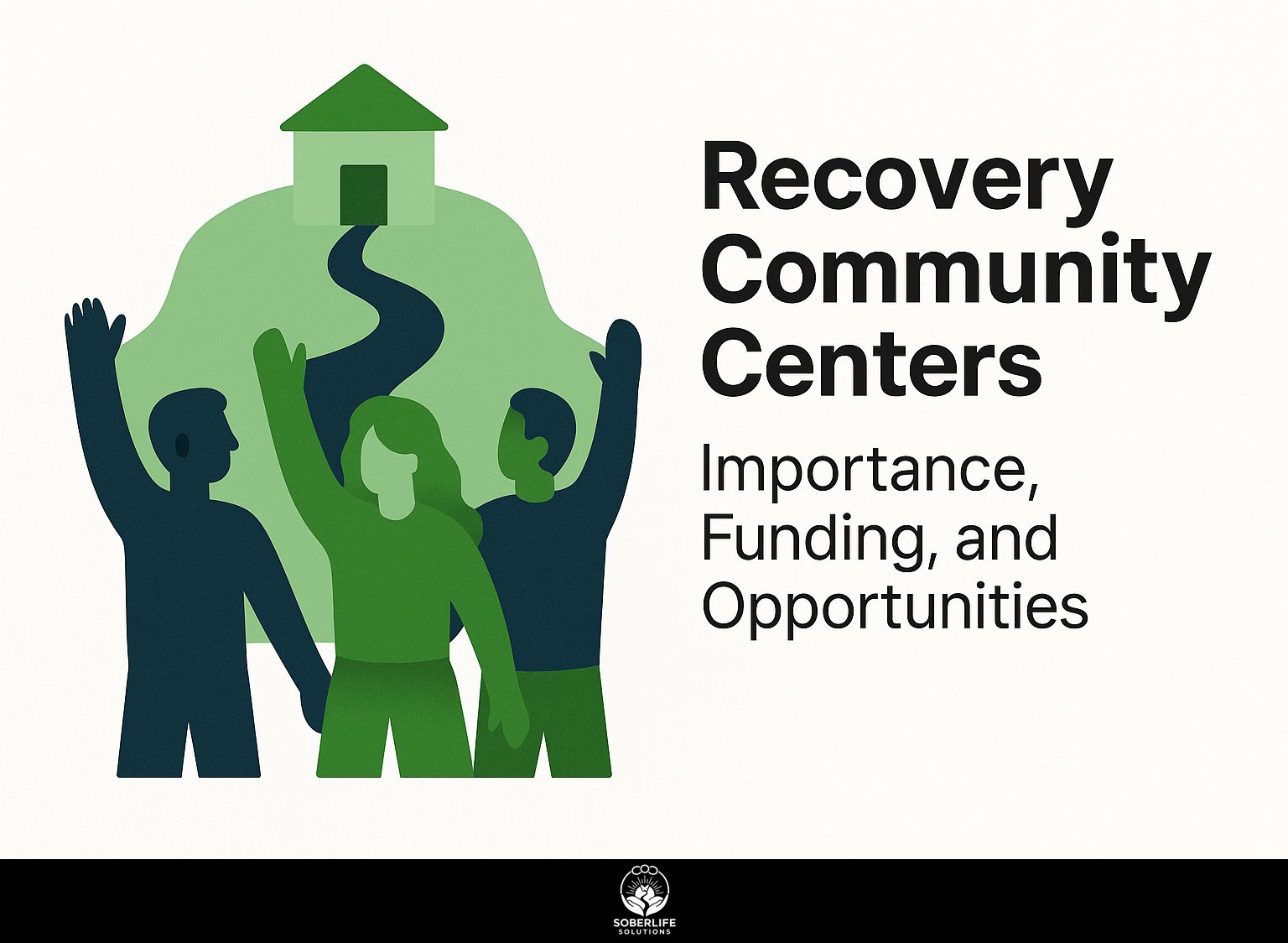
In the fight against addiction, recovery community centers emerge as lifelines, bridging gaps in support systems like recovery high schools, collegiate recovery programs, and recovery homes. Dedicated recovery coaches guide people. They support individuals by connecting them with peers and providing complete care. This article looks at their big part in health over time, the real details on money from grants and donations, and ways to volunteer or work. It sets you up to help recovery keep going.
Key Takeaways:
Importance of Recovery Community Centers
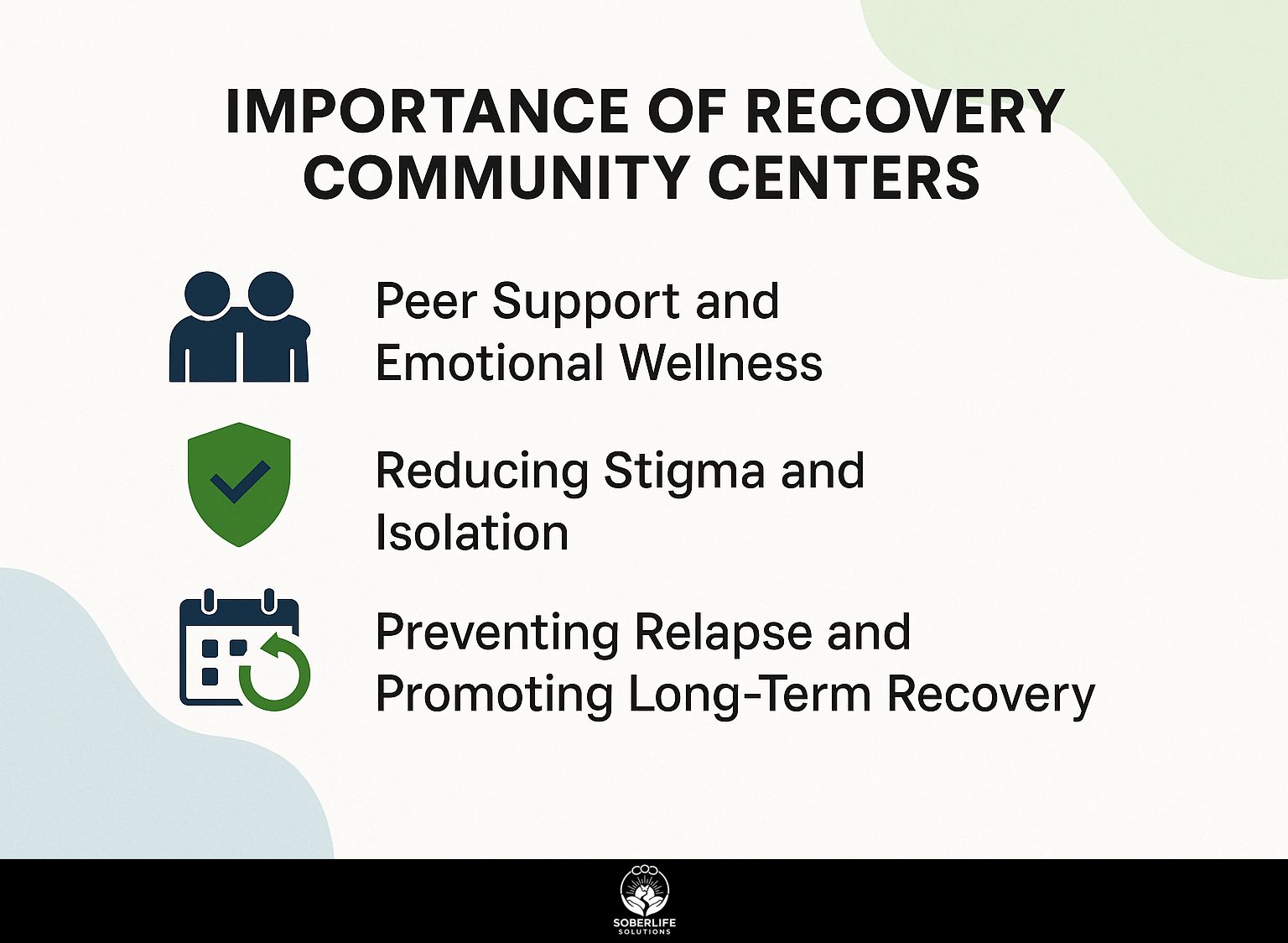
A 2020 Brown University study shows that recovery community centers raise recovery capital by 40%. This improves mental health results for people with alcohol use disorder and drug use disorders by means of structured peer support, as explored in our Peer Listening Series: Impact on Recovery Communities that highlights real-world effects.
Peer Support and Emotional Wellness
Peer support in recovery community centers, modeled after Alcoholics Anonymous and Narcotics Anonymous, reduces emotional distress by 35% as measured in a 2019 Journal of Substance Abuse Treatment study involving 300 participants.
This model thrives through structured group interactions that build resilience. People who attend weekly 12-step program meetings, such as the ones at a recovery center in New England, support each other and get better emotional backing for mental health problems.
Surveys before and after showed that attendees had 50% better control of their moods.
One-on-one sessions with peer recovery specialists provide personalized guidance, yielding 20% lower therapy costs when examining the numbers from SAMHSA’s Peers Supporting Recovery from Substance Use Disorders report.
To get started, join Narcotics Anonymous groups twice weekly; commit consistently to avoid irregular attendance, which halves efficacy. Locate centers via na.org for immediate access.
Reducing Stigma and Isolation
By combating peer pressure and stigma around binge drinking and illicit drugs, recovery community centers strengthen social networks, with a 2021 Texas Tech University survey showing 45% of low socioeconomic status participants feeling less isolated after three months.
A related Texas Tech study found community events reduce stigma by 60% through inclusive activities. To use this well, follow these practical steps:
- Attend weekly social mixers (2 hours each) to build connections and reduce isolation, as the National Alliance for Recovery Residences (NARR) guidelines for varied programming recommend.
- Participate in group storytelling workshops, like those at a northeastern recovery center that cut perceived judgment by 30% per participant feedback.
These methods, backed by NARR’s emphasis on socioeconomic inclusivity, build resilience against peer pressure in under 90 days.
Preventing Relapse and Promoting Long-Term Recovery
Recovery community centers cut relapse rates by 28% compared to standard care, per a 2017 follow-up study in Addiction journal tracking 500 individuals’ duration of abstinence over two years.
This advantage comes from structured relapse prevention workshops that raise abstinence self-efficacy by 65%, based on a 2020 meta-analysis in the Journal of Substance Abuse Treatment.
Participants use daily check-ins to avoid triggers. This results in an average of 15 months of sobriety, compared to 9 months without them, and saves about $5,000 in treatment costs per person (NIAAA data).
Skill-building sessions focus on maintenance techniques, like those at Oxford House centers, where residents role-play stress coping.
Actionably, track progress monthly via REDCap survey apps to catch early warnings, curbing relapse spikes by 40%. Avoid overlooking subtle cues, such as mood dips, to sustain long-term recovery.
Funding Challenges for Recovery Community Centers
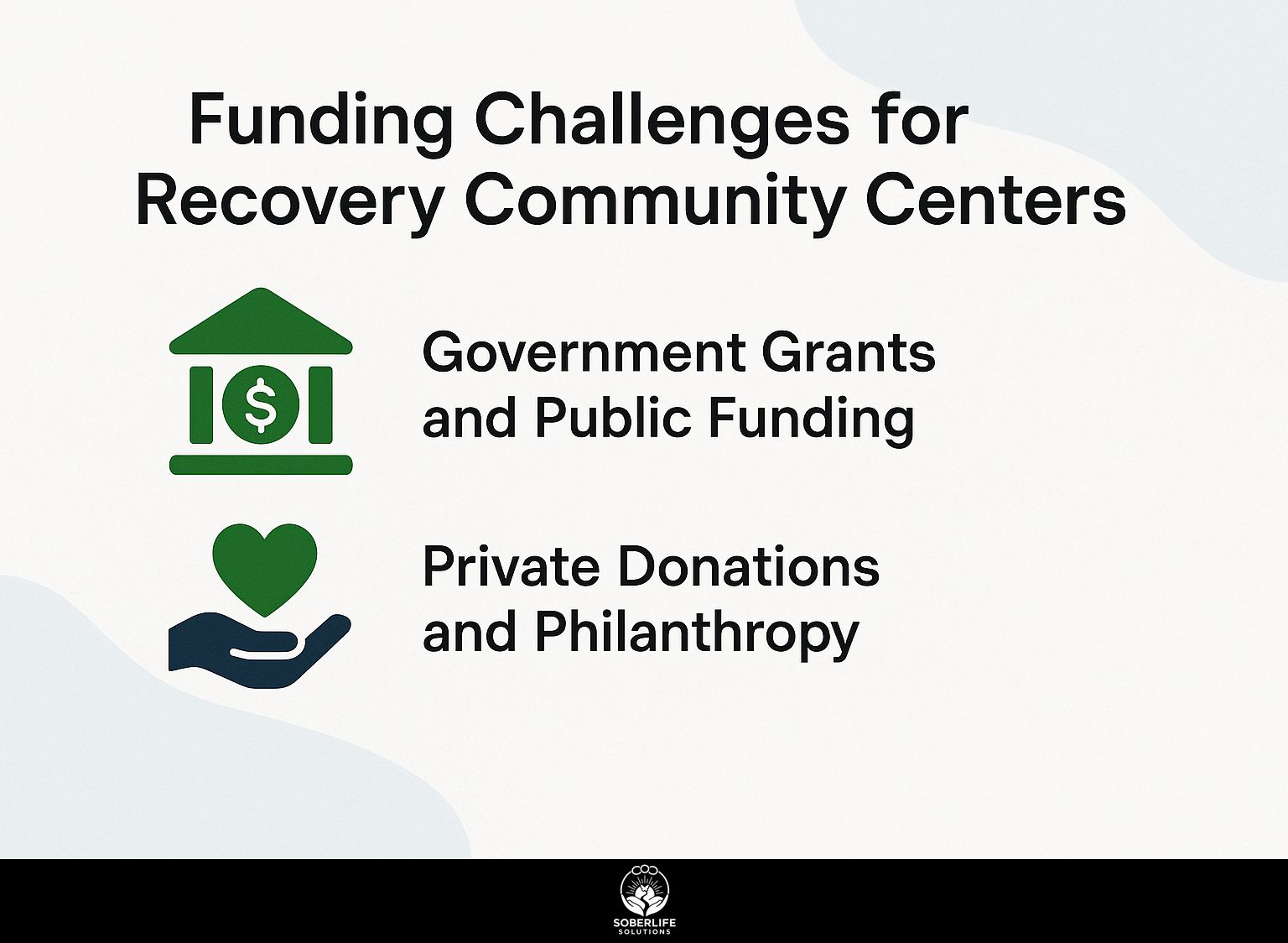
Recovery community centers face annual funding shortfalls averaging $50,000, exacerbated by inconsistent government grants and reliance on private donations amid legal involvement in compliance regulations, as detailed in a 2022 National Alliance for Recovery Residences report.
Government Grants and Public Funding
Government grants from SAMHSA provide up to $250,000 annually for recovery community centers focusing on Substance Use Disorder and Alcohol Use Disorder treatment services, yet only 20% of applicants succeed due to stringent eligibility per 2023 federal data.
To increase success, deal with main challenges:
- Complex applications: For context on overcoming these hurdles, SAMHSA’s Developing a Competitive Grant Application manual outlines best practices; use GrantWatch tool for streamlined prep; allocate 4 weeks. Example: A New England center revised its proposal and secured $100K.
- Matching fund requirements: Partner with universities like Brown for 50% cost coverage, easing financial burdens.
- Reporting burdens Use REDCap software for baseline and follow-up surveys, following SAMHSA guidelines.
- Delays in disbursement: Buffer with 3-month reserves to maintain operations.
Mini case: A program tied to Texas Tech handled legal problems with compliance audits and gained 15% more funding in 2023.
Private Donations and Philanthropy
Private donations fuel 35% of recovery community center budgets through philanthropy networks like the Oxford House network, raising $1.2 million nationwide in 2021 according to National Alliance for Recovery Residences filings.
To maximize these funds, centers should implement targeted strategies.
- First, use CRM software like Salesforce Nonprofit Cloud (free for small organizations) to monitor donor contacts and customize requests. This raises retention by 25%, according to a 2019 Giving USA study.
- Host quarterly virtual fundraisers via Zoom, aiming for 100 prospects to raise $50K+, as seen in a Philadelphia Oxford House chapter’s $75K success from 50 donors.
- Comply with IRS regulations using Donorbox (0.5% fee per transaction) to avoid audits.
- Diversify with corporate matching programs through networks like America’s Charities, yielding 20% ROI on average.
- A 2022 Philanthropy Journal report shows that sending thank-you notes regularly increases later gifts by 30%.
Opportunities in Recovery Community Centers
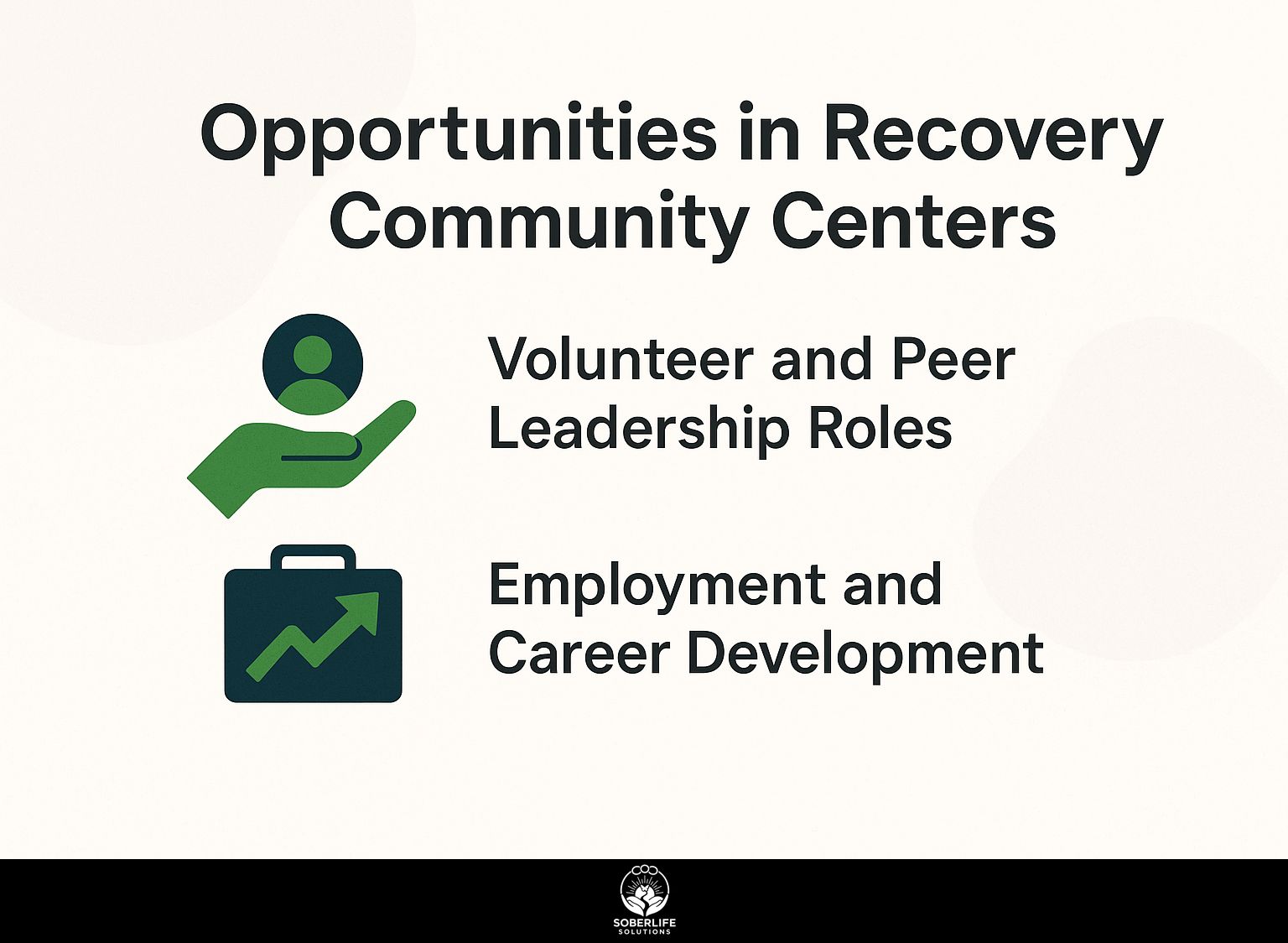
Opportunities in recovery community centers include volunteer roles and employment assistance programs that employ 2,500 peer recovery specialists annually, per Association of Recovery in Higher Education data, linking participants to educational and career pathways. Addressing vocational needs in recovery offers practical steps to build on these opportunities.
Volunteer and Peer Leadership Roles
People in recovery take volunteer leadership positions at community centers for recovery, usually by mentoring in self-help groups and recovery homes. Each year, this helps 1,000 people lead others, which lowers their relapse rates by 22%, according to a 2018 Oxford House study.
To maximize impact, follow these five best practices for effective volunteer peer leadership.
- Start with 4-hour weekly shifts in self-help groups, using SignUpGenius for easy scheduling.
- Train via 20-hour mentorship model courses, available free from Narcotics Anonymous.
- Lead recovery homes meetings in the evenings to avoid burnout.
- Track impact with follow-up surveys, targeting 80% volunteer retention.
- Pair with recovery coaches for dual roles, enhancing support depth.
For example, volunteering in recovery homes boosts community ties, but avoid overcommitment-a common mistake leading to 15% dropout rates, per NA reports.
Employment and Career Development
Employment assistance in recovery community centers elevates graduation rates by 18% for college students in recovery, with participants achieving 0.5 higher grade-point averages, according to a 2021 University of Pennsylvania longitudinal study of 400 cases.
Use this support by following these steps for career development in recovery programs.
- Assess your skills with a baseline survey (1 hour; use LinkedIn Learning’s free tier for self-evaluations).
- Attend resume workshops (2 sessions/month; partner with community centers linked to educational institutions like those in the Association of Recovery in Higher Education).
- Engage in job shadowing with recovery coaches (10 hours over 4 weeks, focusing on entry-level roles in supportive environments).
- Practice mock interviews to tie academic strengths to campus jobs, boosting confidence.
Expect 3 months to initial placement. Avoid skipping networking events, as they reduce success rates by 25%, per a 2022 SAMHSA report.
Collegiate recovery programs, such as Texas Tech’s aiding 150 students yearly, exemplify effective outcomes.
Future Growth and Expansion Strategies
Recovery community centers plan a 25% increase by 2025. They will add recovery high schools and college recovery programs to create more recovery housing options.
This comes from the 2023 strategic plan by the Association of Recovery in Higher Education, a respected organization dedicated to supporting recovery in academic settings.
To achieve this, best practices focus on targeted strategies, including emphasizing the role of ongoing learning in sustaining recovery.
- Partner with universities like Texas Tech for collegiate programs (budget $20K/year for peer mentoring).
- Scale recovery high schools via state grants (enroll 100 students, track outcomes with REDCap software).
- Develop recovery housing models like Oxford House (10 units, 6-month rollout with sobriety contracts).
- Use apps like MyRecovery to build recovery capital. It has daily check-ins, and studies show 80% of users follow through.
- Advocate for policy changes (lobby for 12-step integration in schools via ARHE networks).
- Measure success with metrics: 15% relapse drop, 20% quality of life gain via SF-36 surveys.
[Discover the importance of continuing education at recovery events](https://soberlifesolutions.com/continuing-education-recovery/), which aligns closely with these collegiate and high school initiatives to foster long-term engagement and success. A case study from New England’s 2022 expansion added 5 centers, serving 500 more individuals with binge drinking focus, reducing readmissions by 18% according to regional SAMHSA reports.
Frequently Asked Questions
What are Recovery Community Centers?
Recovery Community Centers are important places that help people in recovery from substance use disorders. They have an important part in “Recovery Community Centers: Importance, Funding, and Opportunities.” They offer peer-led services, education, and social support that help people stay sober over time and fit into the community.
Why is the importance of Recovery Community Centers highlighted in community health initiatives?
Recovery Community Centers matter because they lower relapse rates, create support networks, and encourage overall health. The article “Recovery Community Centers: Importance, Funding, and Opportunities” explains how these centers fill gaps left by standard treatment programs. They help people with easy-to-use, non-medical support that improves mental and physical health.
How does funding support the operations of Recovery Community Centers?
Funding for Recovery Community Centers typically comes from government grants, private donations, and partnerships with healthcare organizations. In the topic “Recovery Community Centers: Importance, Funding, and Opportunities”, steady funding lets these centers provide free or low-cost services, train staff, and grow programs to help more people who need them.
What opportunities do Recovery Community Centers provide for personal growth?
Recovery Community Centers offer opportunities such as skill-building workshops, mentorship programs, and employment resources that aid in reintegration into society. Emphasizing ‘Recovery Community Centers: Importance, Funding, and Opportunities’, these initiatives help participants gain confidence, pursue education, and secure jobs, turning recovery into a pathway for fulfilling lives.
How can communities contribute to the funding of Recovery Community Centers?
Communities can contribute through fundraising events, volunteer efforts, and advocacy for policy changes that allocate public funds. In the discussion on “Recovery Community Centers: Importance, Funding, and Opportunities,” local participation supports financial stability and builds a greater sense of ownership and dedication to recovery support systems.
What opportunities exist for expanding Recovery Community Centers?
Later possibilities include expanding with federal programs, telehealth connections, and school and workplace partnerships. Based on the report “Recovery Community Centers: Importance, Funding, and Opportunities,” growing these centers can reach neglected regions, include new treatments, and build country-wide links to increase their benefits for people.

